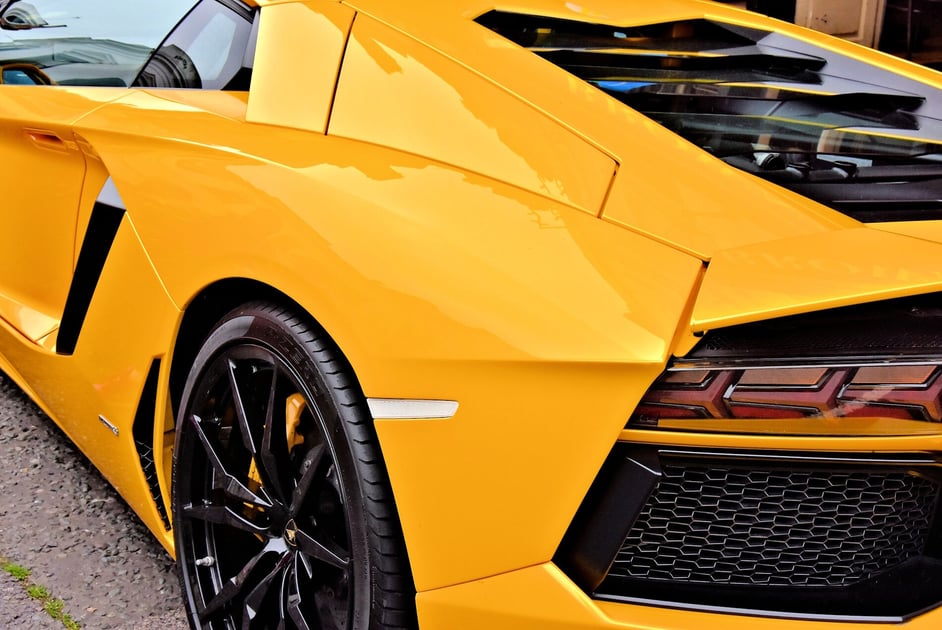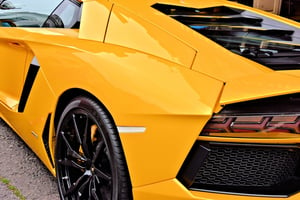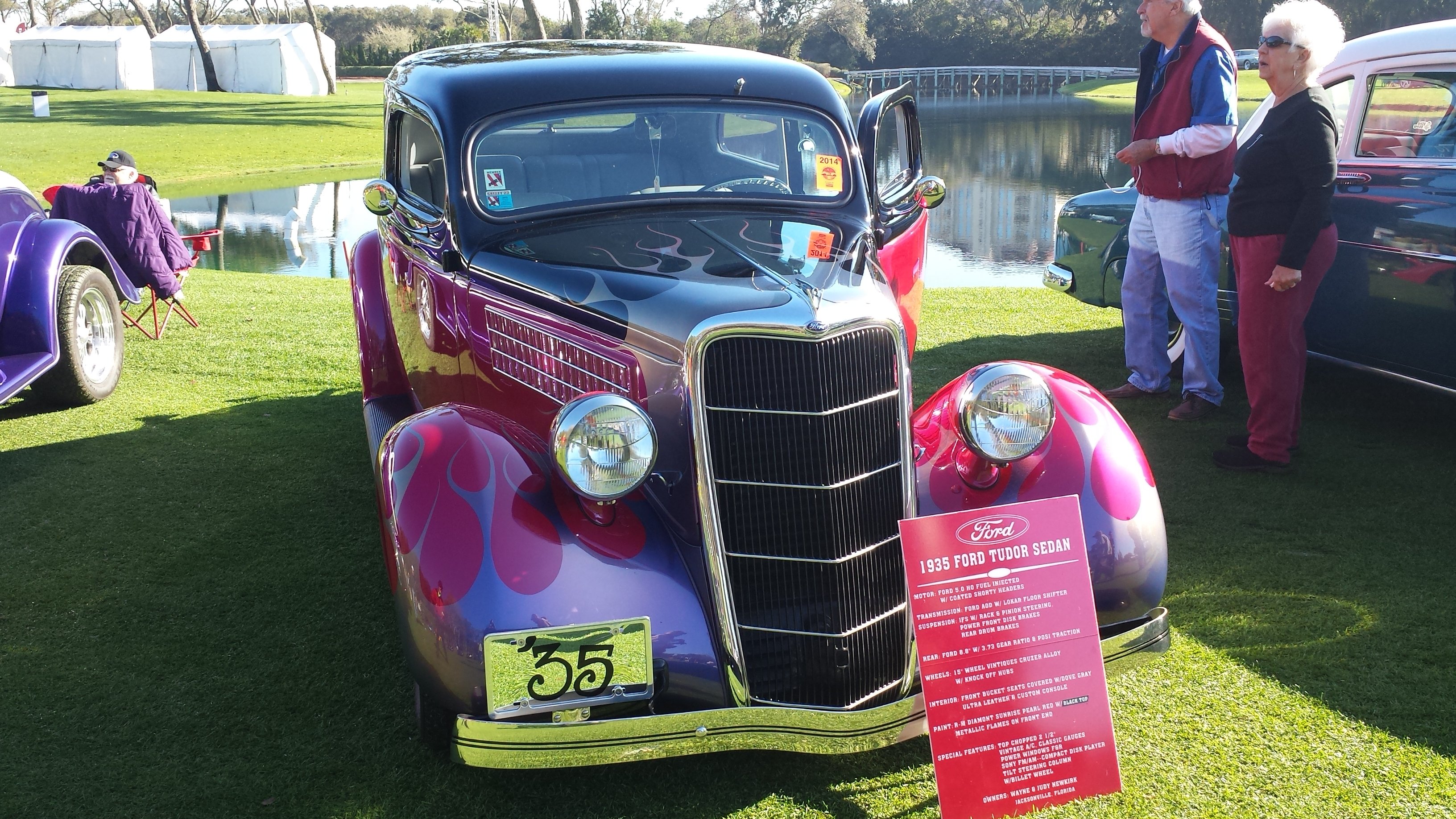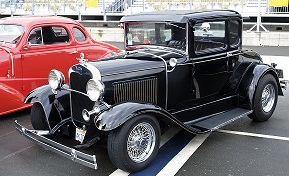The Amelia Concours: The Best of the Best for classic cars
Once we at Bell Performance did the Winter Park Concours D'Elegance a few months ago, we knew we wanted to do another one. The Concours at Amelia...

What notable things in history happened on April 26th? The Mutiny on the Bounty happened in 1789, and the album Dark Side of the Moon by Pink Floyd went to #1 in 1973, as part of its record (no pun intended) 741-week (that’s more than 14 years) run in the Billboard Album Chart. Benito Mussolini (1945) and Jim Valvano (1993) both died. April 26th was also the birthday of a broad spectrum of notables – Jay Leno, Saddam Hussein, Supreme Court justice Elena Kagen, Ann-Margret, Harper Lee (To Kill A Mockingbird)….and the subject of our blog today – luxury car pioneer Ferrucio Lamborghini.
 Lamborghini. The name alone was enough to conjure up defining visions of speed and performance for decades. Back when I was in school, the favorite debate was whether the Ferrari Testarossa or the Lamborghini Countach was the cooler car. The Lamborghini often won the argument because young boys like speed above all else.
Lamborghini. The name alone was enough to conjure up defining visions of speed and performance for decades. Back when I was in school, the favorite debate was whether the Ferrari Testarossa or the Lamborghini Countach was the cooler car. The Lamborghini often won the argument because young boys like speed above all else.
No doubt, the Lamborghini Countach was plenty fast. The 5000QV version of the Countach was introduced in 1985 with a top speed of 185 mph and a 0-60 time of just 4.8 seconds. To be fair, the 185 mph was probably a generous estimate - it really topped out around 170 mph. To have one of those beauties in 1985 would cost you just under $100,000 (in 1985 money), unless you wanted to add the optional sound system for an extra $7,500.
The birthday boy, Ferrucio Lamborghini, wasn’t born as a race car driver or anything like that. He grew up in a farming family in northern Italy. As a young man, he was drawn more to the farm equipment engineering side than the farming side itself. This led him to pursue his technical education near Bologna before being drafted into WWII (he was taken prisoner by the British near the end of the war). Something about the war sparked an interest in racing – in the late 1940s, Ferrucio modified his own homely family car and turned it into a racer suitable for entering into the Mille Miglia race. Unfortunately, the race (and his enthusiasm for car racing) ended after 1100 kilometers when he crashed his car into the side of a restaurant.
Racing was not, luckily, his primary occupation, for Ferrucio Lamborghini’s real job was designing farm equipment and tractors. In fact, he was responsible for a key tractor innovation – dual-fuel design. Gasoline was really expensive in Italy after the war, so Lamborghini came up with a new tractor engine design that could start with gasoline before switching over to diesel fuel.
Lamborghini’s increasing wealth from his equipment business provided the seed money for what would become his eventual foray into high-performance luxury cars. It all started, ironically, from Ferrucio’s purchasing of other luxury cars. Throughout the 1950s, he owned an assortment of high-end automobiles – Alfa Romeos, Maseratis, Mercedes. They all had their downsides. He also purchased a series of Ferrari models, but they weren’t ideal. He thought they were “good” but were too noisy and rough to be ideal for use out on the road. Nobody plunks down that kind of cash for a Ferrari just to get that, right?
Lamborghini also found the Ferrari clutches to be substandard. And perhaps the final straw - the company’s after-sales service left a lot to be desired. Ferrucio Lamborghini compiled his laundry list of suggestions and contacted Enzo Ferrari directly, only to be dismissed by the notoriously prideful car magnate. That was a bad move, because within a few short years, Ferrucio Lamborghini had started his own competitor car maker, even going as far as hiring away one of Ferrari’s key engine design “Gang of Five” engineers. Maybe Enzo Ferrari should have been a little more open to constructive criticism.
So in 1985, if you had six figures to spend, you could drop it on a shiny new Lamborghini Countach. For that price, the Countach really gave you a race car experience. Deep bucket seats, single spoke steering wheel and wide door sills all made the driver feel like they were in a racing cockpit. The Countach pioneered an on-board diagnostic display that was years ahead of its time – the driver, on the left side of the dash display, could see a status display of all the car’s systems. Very futuristic. Not so futuristic was the lack of rear visibility – in part because of the rather-large engine sitting in back of the driver. Rear view mirrors were useless, so Lamborghini worked an end-around to this problem by designing a periscope, of all things, to allow the driver to see what they would have seen with a conventional rear mirror.
Image Credit: Wikipedia

Once we at Bell Performance did the Winter Park Concours D'Elegance a few months ago, we knew we wanted to do another one. The Concours at Amelia...

We know that many of our readers are classic or antique car owners, or simply interested in extending the life of their cars, so we wanted to share...
The next iteration of the Barrett Jackson classic car auction took place recently in Palm Beach, Florida. Dubbed "the worlds greatest collector car...